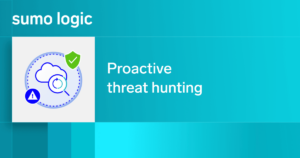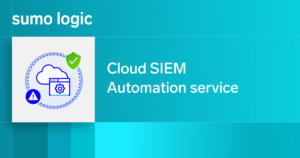
You wouldn’t drive a car that hasn’t been serviced in a decade. So why are you still trusting a legacy SIEM solution? The world of cybersecurity is in a constant state of flux, and your security information and event management (SIEM) needs to keep up. If you’re not regularly reassessing it, you might as well roll out the red carpet for hackers. Let’s discuss when and why you should seriously consider giving your SIEM a much-needed check-up.
Understanding the SIEM landscape
Once upon a time, SIEMs were the shiny new toy in cybersecurity—a one-stop shop for log management, threat detection, and response. Fast forward to today, and they’ve evolved into a beast of a market with more bells and whistles than you can count. But here’s the catch: bells and whistles don’t necessarily reduce risk or catch bad actors. And with new challenges cropping up every day, if you’re not reassessing your SIEM regularly, you’re playing with fire—or at least malware.
The SIEM market is undergoing what can only be described as a seismic shift. We’ve seen the rise and fall of several security technologies over the years, but SIEM has remained a staple, albeit with significant evolution. Initially, SIEM solutions were all about basic log management and correlation—nothing too fancy, but they got the job done. Fast forward through a couple of generations, and today’s SIEMs are packed with advanced analytics, machine learning, and integration with threat intelligence feeds. Some even boast security orchestration, automation, and response (SOAR) capabilities, making them a powerhouse in the cybersecurity toolkit.
But here’s the kicker: the market isn’t stopping here. The latest talk is all about the fifth generation of SIEM solutions. These latest versions are not just reactive; they’re predictive. We’re talking AI-driven insights, recommendations, and even automated remediation. They’re designed to handle the dynamic nature of modern cyber threats, providing security teams with the tools they need to stay ahead of the curve.
Critical triggers for reassessing your SIEM
With all this innovation, sticking with an old SIEM solution is like using a legacy landline in the age of smartphones. Here are some key triggers that should have reevaluating your SIEM sooner rather than later.
1. Recent security incidents: The wake-up call you can’t snooze
You’ve just survived a successful pen test or a security breach. Congratulations, your SIEM just failed its most crucial test. If your SIEM solution didn’t see that coming, your current system’s vulnerabilities have been laid bare. Ignoring them is like ignoring a check engine light—asking for trouble.
We’re not discussing missing a stray phishing email but fundamental flaws in your security posture. When a breach occurs, your SIEM should be shouting the alarm, not sitting quietly in the corner, hoping no one notices. This is a critical moment for reassessment. You need to evaluate whether your SIEM can still provide the robust protection it once promised—or if it’s time to move on.
Take a hard look at how your SIEM responded during the incident. Did it provide timely and actionable alerts? Did it help investigate the breach or contribute to the confusion? A thorough post-incident review should include a candid evaluation of your SIEM’s performance. If the answer to these questions is “no,” it’s time to consider your options. A SIEM that fails during a crisis is like a fire alarm that goes off after the building is already in ashes.
2. Regulatory changes: new rules, new risks
Ah, regulations. If they weren’t keeping you up at night, they probably should be. Whether it’s GDPR, HIPAA, or some other alphabet soup of compliance, staying on top of regulatory changes isn’t just good practice—it’s mandatory. If your SIEM can’t adapt to these changes, you’re not just risking fines; you’re risking your entire operation. Do you want to explain to your boss why you’re paying massive penalties because your SIEM was stuck in 2015?
The world of regulations is a minefield, and it’s only getting trickier to navigate. New laws and standards are introduced constantly, and existing ones are updated continuously. For instance, GDPR didn’t just appear out of nowhere—it was years in the making, but when it hit, it hit hard. Unprepared companies scrambled to get compliant, often incurring hefty fines along the way.
Your SIEM solution plays a critical role in ensuring compliance. It needs to be capable of logging, monitoring, and reporting in ways that meet the stringent requirements of modern regulations. Your SIEM should have robust data collection, retention, and retrieval capabilities. It should support your organization’s efforts to meet compliance deadlines and facilitate the regular audits you will undergo. If your SIEM struggles to keep up with these demands, it’s not just a nuisance but a liability.
3. Organizational growth: more opportunities, more challenges
Your company’s growing, you’re entering new markets, and the future looks bright. With growth comes exciting opportunities—but it also brings new security challenges. As your business expands, your SIEM solution needs to scale alongside it, ensuring that your security posture remains strong no matter how fast you move. Now is the perfect time to assess whether your SIEM can keep up with your evolving needs so you can confidently continue your growth journey without worrying about potential gaps in protection.
Growth isn’t just about adding more people to your payroll or opening new offices—it’s about ensuring your infrastructure can support your expanding operations. This includes your security infrastructure. As your company grows, so does your attack surface. More users, more endpoints, more data—it all adds up. And if your SIEM solution isn’t designed to scale, you’re in for more than growing pains.
A scalable SIEM can handle the increased volume of data without breaking a sweat. It should be able to ingest and process logs from all your new sources without missing a beat. And it needs to do all this while still providing the same level of insight and protection as before. If your SIEM is starting to show signs of strain—slow response times, missed alerts, or just plain crashing under the load—it’s time to reevaluate.
Another aspect of growth is the adoption of new technologies. Your company is moving to the cloud, adopting DevOps practices, or integrating AI into its operations. These changes can introduce new security challenges that your current SIEM might need to be equipped to handle. In such cases, reassessing your SIEM isn’t just a good idea—it’s a necessity.
4. Budget cycles: the perfect time to stop kicking the can down the road
It’s that time of year again—budget planning. Instead of robotically renewing the same old contracts, why not consider where your money is going? Sticking with an outdated SIEM just because it’s what you’ve always done is a sunk cost fallacy. This is your chance to upgrade, improve, and protect your organization better.
Budget cycles offer a fantastic opportunity to review your security strategy and ensure you’re staying ahead of emerging challenges. It’s the perfect time to consider how you can optimize and enhance your SIEM solution to meet your organization’s evolving needs. Even if your current SIEM is performing well, this is your chance to explore ways to strengthen your security posture and invest in future-proof solutions that can continue to drive success as your business grows.
When reviewing your budget, consider your SIEM solution’s total cost of ownership. This includes the upfront costs and ongoing maintenance, support, and upgrade expenses. Compare this with the potential costs of a breach—lost revenue, legal fees, regulatory fines, and the hit to your reputation. Suddenly, that upgrade doesn’t seem so expensive, does it?
Also, consider the opportunity cost of sticking with an outdated SIEM. What could your team accomplish with a more advanced solution? Could they be more proactive in threat detection? Could they respond faster to incidents? Could they spend less time managing alerts and more time on strategic initiatives? These are all questions you should be asking during your budget review.
5. Industry mergers and acquisitions: is your SIEM a survivor?
The SIEM industry is like a reality TV show—full of shocking mergers and surprise exits. If your vendor just got swallowed up by a larger fish, or if the product you rely on is now part of some Frankenstein’s monster of a company, you should be asking: is this solution still the best fit for us? Don’t wait until support dwindles or updates slow to a crawl. Reassess now.
Mergers and acquisitions can be a double-edged sword. On the one hand, they can lead to development of new features and capabilities as companies combine their expertise. On the other hand, they can result in the death of a product or the degradation of support and updates as the new parent company focuses on its core offerings.
If your SIEM vendor has recently been acquired, it’s time for due diligence. Find out what the new company’s plans are for your product. Will it continue to be developed and supported, or is it being phased out? Will you still have access to the same level of customer support? Will the product be integrated with other solutions in the company’s portfolio, and if so, how will that affect its performance?
Even if your product isn’t being discontinued, the quality of support and updates can suffer during a merger or acquisition. Development teams are often restructured, and priorities can shift. If your SIEM solution suddenly gets fewer updates or support tickets take longer to resolve, it’s time to reassess. Don’t wait until your SIEM becomes a forgotten relic in the new company’s product lineup.
How to start the reassessment process
So, you’ve recognized the signs—it’s time to reassess your SIEM. But where to start? This SIEM evaluation guide is your new best friend for safeguarding your future. Walk through the process from evaluating whether you’re collecting the proper logs to determining if your SIEM’s response capabilities are up to snuff. You can even use the score card for easy reference and gut check.
The guide is structured around five key areas of SIEM performance: data collection, data transformation, advanced analytics, investigation capabilities, and response capabilities. Each location is critical to your overall security posture, and the guide provides a detailed framework for evaluating how well your current SIEM performs in each.
Final thoughts
In the wild world of cybersecurity, the only constant is change. If you’re not regularly reassessing your SIEM, you’re not just standing still—you’re falling behind. The triggers are everywhere, from recent security incidents, new regulations, organizational growth, budget planning, to industry changes. Don’t wait for outside forces to make the decision for you. Take control, reassess, and ensure your SIEM meets the challenge.
Ready to see if your SIEM is still cutting it? Get our SIEM evaluation guide and find out if it’s time to upgrade.




